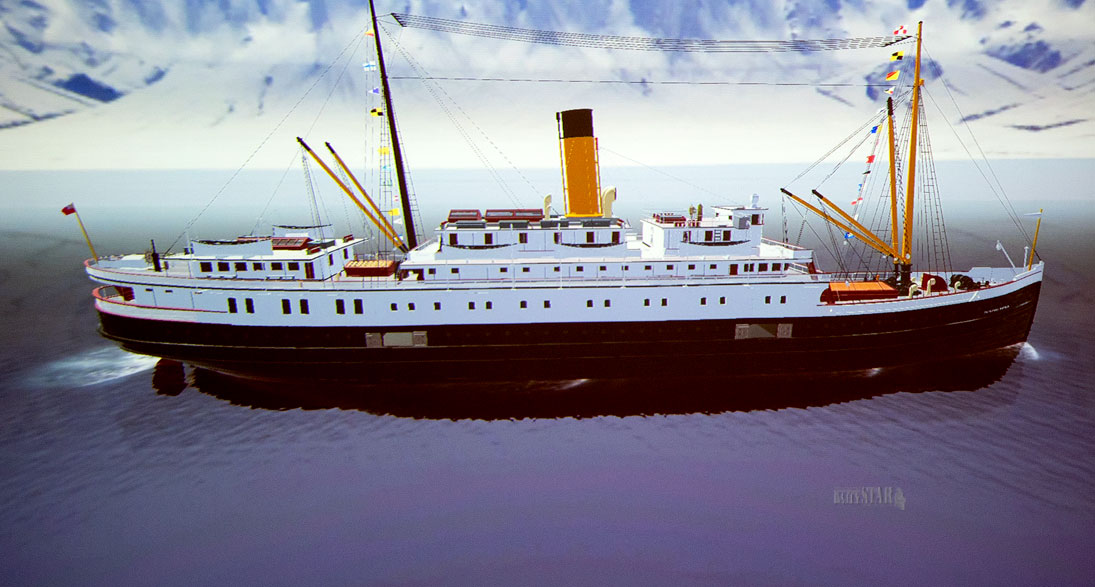
Photo by Vince Fedoroff
INTERACTIVE DISPLAY – The SS Princess Sophia includes interactive components, such as this one, along with artifacts from the ship and publications on the sinking.

Photo by Vince Fedoroff
INTERACTIVE DISPLAY – The SS Princess Sophia includes interactive components, such as this one, along with artifacts from the ship and publications on the sinking.
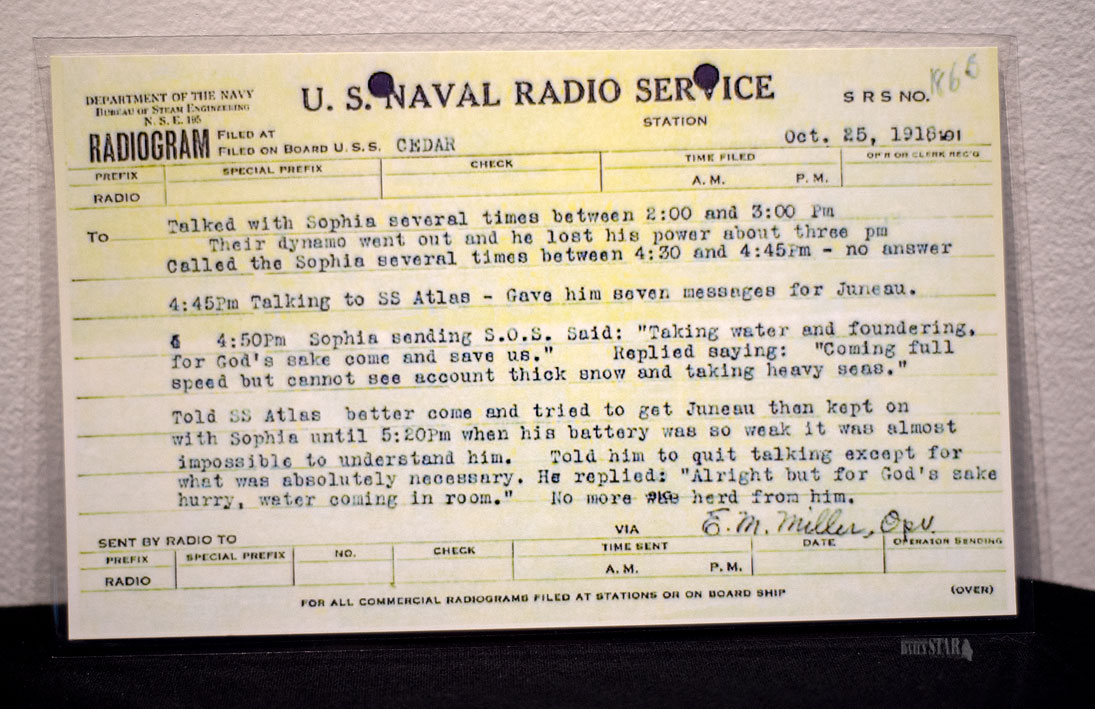
Photo by Vince Fedoroff
FINAL MESSAGE – Messages from the SS Princess Sophia after it hit Vanderbilt Reef are part of the exhibit at the Yukon Arts Centre.
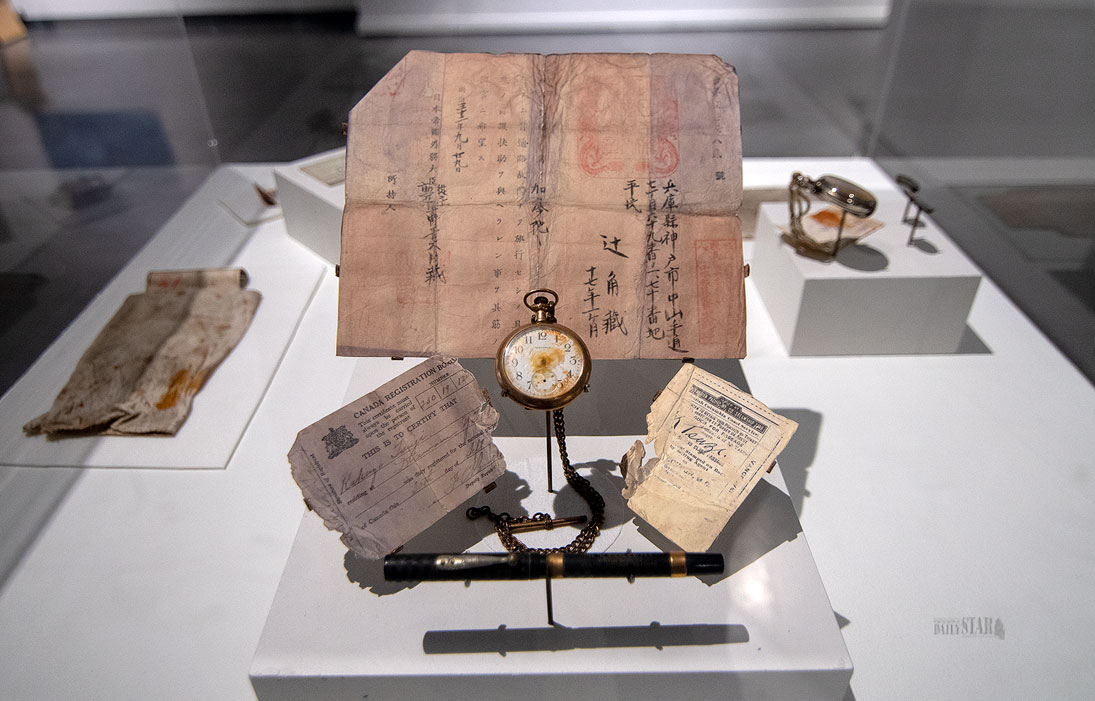
Photo by Vince Fedoroff
ON DISPLAY – Artifacts from the SS Princess Sophia are seen at the exhibit at the Yukon Arts Centre. All who were aboard perished in the disaster.
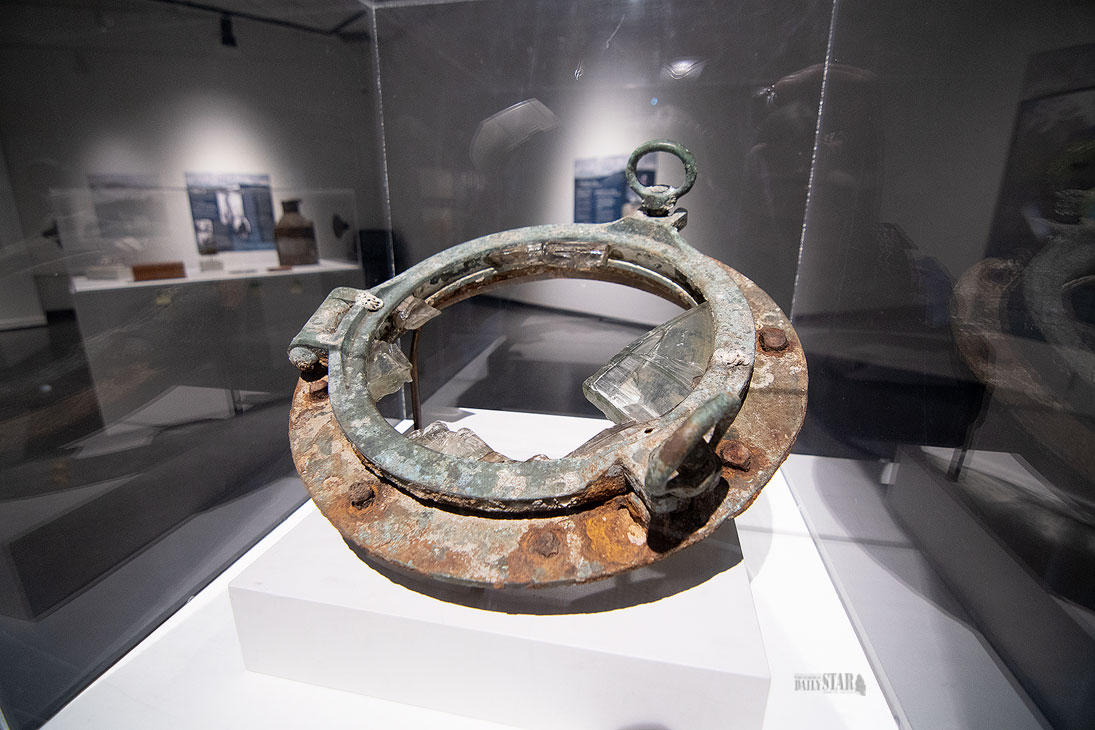
Photo by Vince Fedoroff
REMNANTS FROM A TRAGEDY – Shown above is a portal from the Princess Sophia shipwreck exhibit which opened Thursday evening at the Yukon Arts Centre gallery.

Photo by Vince Fedoroff
A poignant letter from passenger Jack Maskell to his fiancée, Dorothy Burgess, informing her he had made his will that morning.
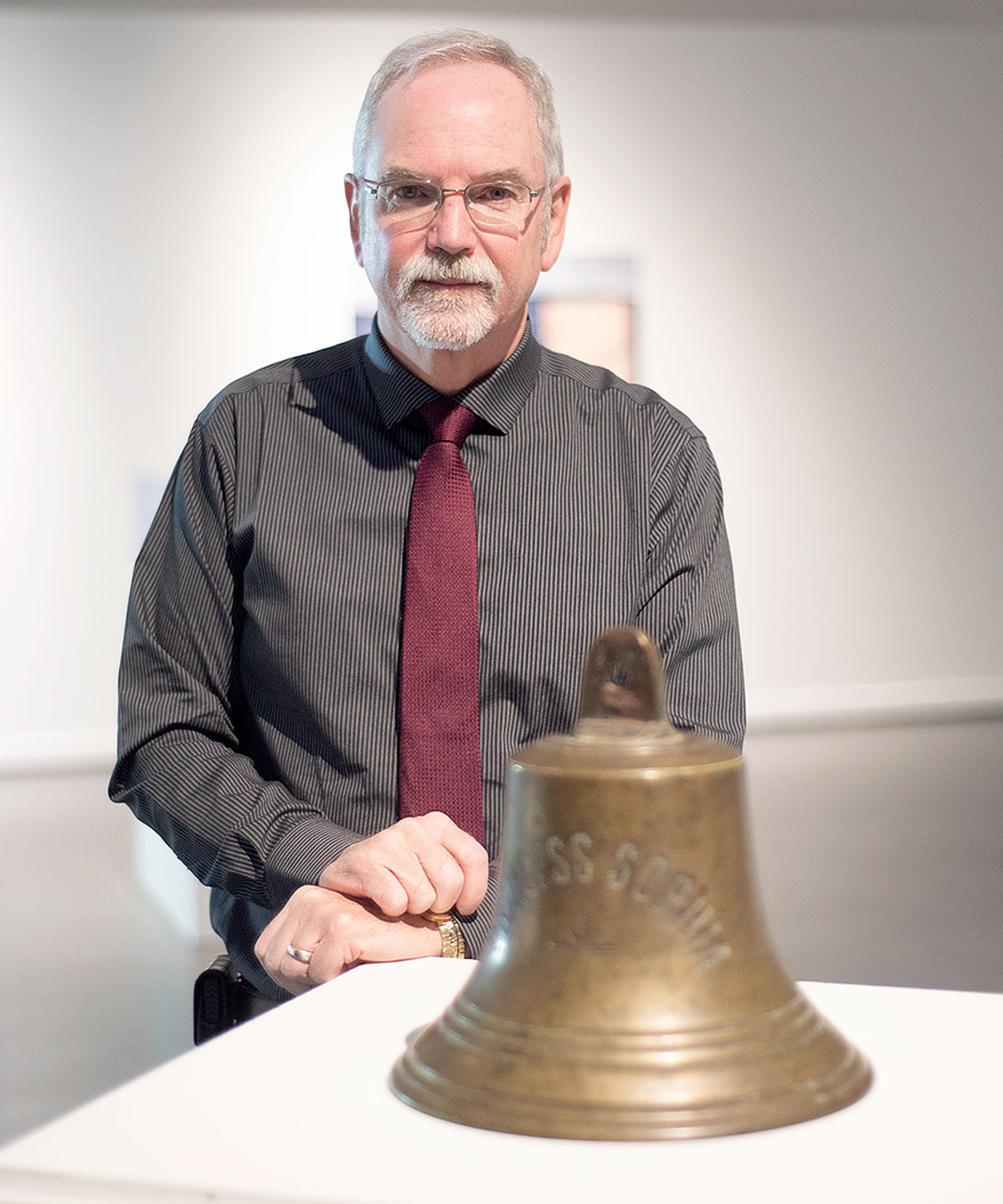
Photo by Vince Fedoroff
David Leverton
It was a tragedy that forever changed the Yukon.
It was a tragedy that forever changed the Yukon.
And for the next month, anyone visiting the gallery at the Yukon Arts Centre will be able to take in the artifacts and installation pieces that detail the sinking of the SS Princess Sophia and the more than 360 people who lost their lives. The tragedy occurred after the ship struck the Vanderbilt Reef in the Lynn Canal a century ago.
The vessel had departed Skagway bound for Vancouver, the final ship of the season to head south. Many aboard were heading Outside for the winter.
One hundred years to the estimated minute it sank, at 5:30 p.m. Thursday, the exhibit opened at the Yukon Arts Centre with a presentation by David Leverton. The former Yukoner is the the executive director of the Maritime Museum of British Columbia in Victoria.
The arts centre is the temporary home to an artifacts exhibit that has made its way through Victoria, Vancouver and Juneau, Alaska before it arrived in Whitehorse as part of the work to mark the disaster’s 100th anniversary.
Thursday morning, staff were putting the finishing touches on the display. They were making sure the cases around the artifacts were clear, that interactive portions of the display were running properly and ensuring everything was in the right place.
“It’s a very complicated story,” Leverton told the Star.
It’s hard today for anybody new to the story to grasp the scope of what all those on board were faced with in the “utter darkness” that came over the ship that night – the sounds of wind and waves crashing, he said.
The chances of a ship striking the reef were less than a per cent given the route taken. However, in the midst of a winter storm, the boat was slightly off-course and at that time during the First World War, there was no lighthouse to warn of the dangers.
The Sophia ended up wedged into the reef with the bow of the ship in 60 feet of water while the stern was 140 feet in water.
Holding up a coin released this month to commemorate the 100th anniversary of the disaster, Leverton pointed out the design shows the moment of impact.
Weather continued to take its toll, though power was restored aboard ship the next day.
It would be 40 hours before the vessel went down, though rescue efforts had been underway but prevented due to the storm.
Low tides also prevented the life boats on the ship from being lowered during daylight hours.
“Nobody could’ve predicted what happened,” Leverton emphasized.’
A class action lawsuit and subsequent investigations have determined Capt. Leonard Locke did everything he could.
The timing of when the ship went down at 5:30 p.m. was largely based on pocket watches that were recovered. The final communication came at 5:20 p.m.
“... for God’s sake hurry,” it reads.
For the entire community of Juneau, that meant residents and hotel workers went to bed with plans to open their homes or rooms to billet the more than 360 who were aboard the Sophia and ensuring there were enough blankets and other supplies for everyone. They awoke the next day to learn it was now a recovery mission.
“The community rallied,” Leverton said.
Over the next few days, 180 bodies were recovered, many submersed in oil that spilled with the sinking.
Those bodies had to be respectfully cleaned, with volunteers from the community along with those who worked for funeral homes.
It was the Princess Alice – which became known as the Ship of Sorrow – that was tasked with carrying the bodies to Vancouver. That ship arrived on Nov. 10, 1918.
Instead of a sombre, mournful mood that had been expected given the disaster, crews on the Ship of Sorrow arrived to a city celebrating the end of the Great War.
At the same time, the Spanish flu was affecting a large segment of the population in B.C. and around the world.
In the midst of all of that, the Sophia became somewhat more lost in the history books than it would have otherwise.
With the 100th anniversary, the story of the tragedy and tributes to the lives that were lost is now making its way across the country through the coin and more locally through a number of events and the exhibit.
There will also be a mobile exhibit to smaller communities in the Yukon and Alaska that don’t have the climate control environment required for the larger exhibit like the arts centre has.
Much of the display focuses on the individual lives and stories of those who perished with a book showcasing the details of each of those on board.
Many were seasonal employees for the 87 White Pass and Yukon Route, which also operated paddlewheelers that made their way through the terrtiory.
The entire crew of two of those boats were among those on board the Sophia and a majority from another paddlewheeler. That’s in addition to many others on-board who worked seasonally in the territory.
So imagine, Leverton continued, in the spring of 1919, when there were no captain nor crews to staff those paddlewheelers. It took its toll on the economy.
“It was a very, very tough time,” he said, ntoing the Yukon fell into an economic malaise that remained until the opening of the Alaska Highway in 1942.
Those who remained in the territory – fewer than 6,000 people – through that period became the “bedrock of the Yukon,” Leverton said, stressing the resiliency of those who stayed.
A century later, there remain important questions arising from the sinking of the Sophia.
Pointing to a panel questioning whether such a disaster could happen again, Leverton noted the major improvements to charting, safety features and technology. He also noted many unknowns when it comes to opening up the Northwest Passage.
Less than 10 per cent of the Northwest Passage is adequately surveyed and less than a per cent of that is done to modern standards.
If there was a serious disaster, any of the Canadian search and rescue centres are at least 2,000 kilometres away, making rescue efforts more lengthy.
There are also many unanswered questions around dealing with the potential for spills from ships, and coping with grey water and such.
Depending on where a ship is registered, there would also be questions around standards for environmental cleanup and liability, all issues Leverton pointed out that would impact Canada’s North.
The exhibit will remain at the arts centre for the next month.
In order to encourage thoughtful and responsible discussion, website comments will not be visible until a moderator approves them. Please add comments judiciously and refrain from maligning any individual or institution. Read about our user comment and privacy policies.
Your name and email address are required before your comment is posted. Otherwise, your comment will not be posted.
Comments (3)
Up 4 Down 0
Joseum Wales on Oct 31, 2018 at 4:03 pm
There was a suggestion the captain may have not wanted to react too soon with the memory of a ship putting women and children in lifeboats who perished; implication was the woman and children would have been fine if they waited it out.
Up 6 Down 0
David Davis on Oct 30, 2018 at 8:41 pm
My grandfather James Vivian Davis was a captain of one of the first US vessels (Estebeth) to arrive. He and others repeatedly offered to offload passengers and were refused time and time again. Maritime laws be damned it was in the hands of the Sophia’s Captain to gain aid prior to the storm that cost so many lives and haunted my grandfather for decades. You seemed to have glossed right over this. This is a story that should see the light of day!
Up 4 Down 0
Joseum Wales on Oct 29, 2018 at 12:10 pm
Hope to visit this exhibit. So sad, a break in the weather as was hoped with the rising barometer pressure and all may have been saved.